Mathematics for Second Graders: A Comprehensive Guide
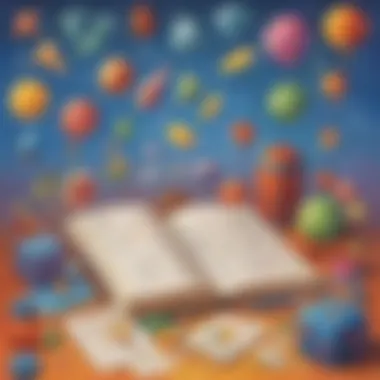

Intro
Mathematics plays a crucial role in the development of second graders. It is during this stage that children begin to grasp essential concepts that form the backbone of their future learning. Engaging students early fosters a positive attitude towards math, enhances problem-solving skills, and promotes a deeper understanding of numerical relationships. Thus, it becomes paramount for educators and parents to encourage effective learning strategies that resonate with young minds.
A comprehensive exploration of the various facets of mathematics appropriate for this age group encompasses a variety of strategies and resources to aid in teaching. The following sections will outline creative activities that support mathematical learning, provide fun quizzes to reinforce knowledge, and discuss fact-based articles that further enhance understanding. These segments will serve to illustrate practical ways to make learning both enjoyable and formative.
Prologue to Mathematics in Second Grade
The introduction of mathematics in second grade marks a vital phase in a child's educational journey. At this stage, students transition from learning basic concepts to honing skills that will serve them throughout their academic and everyday lives. Understanding the significance of early math education becomes essential for parents, educators, and caregivers. This segment provides a clear vision of foundational mathematical concepts while highlighting their relevance and application.
Importance of Early Math Education
Early math education is crucial for developing a strong mathematical foundation. During second grade, children solidify their understanding of numbers and basic operations. This knowledge supports critical thinking and problem-solving skills, essential for later academic success. Moreover, math literacy leads to increased confidence in students, making them more willing to participate in discussions and activities that involve mathematics.
Many studies underscore that early exposure to math concepts can lead to improved attitudes towards learning, fostering a love for the subject. Engaging children in activities that promote arithmetic skills can greatly influence their overall academic trajectory. The importance of early math education cannot be overstated, as it sets the stage for future learning and application in various fields.
Curriculum Overview
The second-grade math curriculum encompasses a diverse range of topics designed to enhance students' number sense and problem-solving capabilities. Subjects covered include:
- Number Sense: Understanding numbers, their ordering, and size comparison.
- Addition and Subtraction: Mastering basic addition and subtraction facts, learning strategies to solve problems efficiently.
- Understanding Place Value: Grasping how numbers are structured in tens and ones to articulate larger numbers.
- Introduction to Multiplication and Division: Basic concepts that introduce students to multiplication as repeated addition and division as sharing.
- Fractions Basics: Initial understanding of fractions, focusing on equal parts of a whole.
This curriculum not only meets educational standards but also promotes critical thinking and real-world application. By focusing on practical and engaging methods, educators can better prepare second graders for advanced mathematical concepts in subsequent grades.
Key Mathematical Concepts for Second Graders
The section on key mathematical concepts serves as the foundational pillar of the mathematics curriculum for second graders. Understanding these concepts is crucial, as they lay the groundwork for more advanced mathematical reasoning in later grades. The integration of these concepts encourages critical thinking and cultivates a positive attitude toward learning mathematics.
By mastering these elementary topics, young learners build confidence in their mathematical abilities. This confidence often leads to increased engagement and a willingness to tackle more complex problems in the future. Moreover, these concepts are not taught in isolation. They are interlinked and help develop overall numerical fluency, which is essential for successful math education.
Number Sense
Number sense is the understanding of numbers and their relationships. This concept is vital for second graders as it helps them compare quantities, recognize patterns, and anticipate outcomes. Developing strong number sense allows students to manipulate numbers creatively and confidently.
Key components of number sense include:
- Recognizing numbers: Students should be able to identify and write numbers up to 100.
- Comparing and ordering: Understanding which numbers are larger or smaller is fundamental.
- Estimating: Gaining familiarity with estimation helps second graders make sense of quantities in real-world situations.
Teachers can encourage the development of number sense through activities that involve grouping objects and visual number lines.
Addition and Subtraction
Addition and subtraction form the core operations of arithmetic. In second grade, students often expand their basic addition and subtraction skills to include larger numbers. The aim is to develop their ability to solve problems both mentally and with written methods.
Tips for effective teaching include:
- Modeling strategies: Demonstrating various methods, such as regrouping or breaking numbers apart, helps students understand different approaches.
- Real-life applications: Engaging students in activities like budgeting, where they add or subtract expenses, enhances relevance.
Understanding Place Value
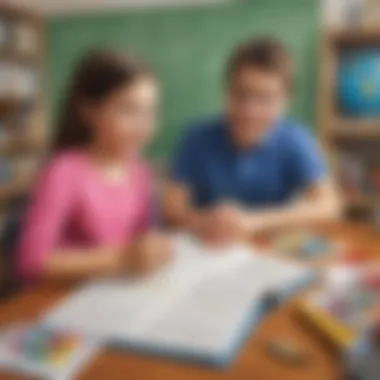

Understanding place value is essential as it enables students to grasp the significance of digits in numbers. In the context of second graders, it goes beyond just knowing what each digit represents. It provides insight into how numbers are composed and decomposed.
For instance, recognizing that in the number 23, the ‘2’ represents 20 and the ‘3’ represents 3, is a key insight.
Teachers can enhance learning with:
- Base ten blocks: Using these tools allows students to visualize and physically manipulate values, promoting an intuitive understanding.
- Place value charts: These can solidify understanding of larger numbers as students learn to read and write them.
Prelude to Multiplication and Division
These are new concepts for second graders, marking an important transition in their mathematical journey. Understanding multiplication and division sets the stage for later work with larger and more complex numbers.
Strategies for teaching these operations include:
- Conceptual understanding: Emphasizing repeated addition for multiplication and sharing for division helps students grasp these operations conceptually.
- Hands-on learning: Utilizing objects like counters to illustrate these concepts can deepen understanding.
Fractions Basics
Introducing fractions at this stage is essential for helping students understand parts of a whole. It is crucial for laying the groundwork for more complex topics in the future.
Key learning points include:
- Recognizing fractions: Understanding common fractions like 1/2, 1/3, and 1/4.
- Visual aids: Using pie charts or fraction pieces can make these concepts clearer.
Teaching Strategies for Math Concepts
Teaching strategies for mathematics at the second-grade level play a crucial role in shaping young learners' attitudes toward numbers and problem-solving. The methods employed can dictate not only students' understanding of specific concepts but also their overall relationship with mathematics in future educational endeavors. Emphasizing various strategies is essential, as it allows educators to cater to different learning styles, which ultimately enhances comprehension and retention.
Concrete Learning with Manipulatives
Using manipulatives is an effective strategy that engages students visually and kinesthetically. These physical objects - such as blocks, counters, or even everyday items - help students grasp abstract concepts through hands-on experience. When second graders can touch and move items, they gain a better understanding of numbers and operations.
For example, using unifix cubes can aid in teaching addition. If a student needs to solve a problem like 3 + 4, they can physically connect three cubes together and then add four more. This process visually represents the addition and reinforces the concept of combining quantities. Additionally, manipulatives foster a sense of exploration, encouraging inquiry-based learning. Through this tactile approach, students are apt to develop a deeper grasp of mathematical principles.
Incorporating Games and Activities
Incorporating games and activities into the math curriculum can significantly enhance engagement among second graders. Games introduce an element of fun, making learning more enjoyable and less intimidating. When students participate in competitive or collaborative games, they often do not realize they are absorbing important mathematical concepts.
Consider simple board games where players move pieces based on the result of a dice roll. Each roll can represent an addition problem or a subtraction task. Such activities not only promote number sense but also social skills, as students learn to take turns and play fair. Furthermore, adding thematic activities, like counting objects related to seasons or holidays, ties math into real-world contexts, making it more relatable and meaningful.
Utilizing Technology in Math Education
Technology has transformed education, and its application in math teaching should not be overlooked. Various platforms and applications offer interactive math experiences that are tailored for second graders. These tools can enhance traditional teaching methods and provide opportunities for individualized learning.
For instance, online resources such as Mathletics or IXL allow students to practice problems at their own pace while providing immediate feedback. This real-time response can clarify misunderstandings and reinforce learning. Additionally, educational videos and tutorials on platforms like Khan Academy can present concepts in a different light, often making them more accessible.
Incorporating these technology-based resources into the classroom or at home promotes an engaging environment that can inspire a love for learning mathematics. Using tech tools not only prepares students for future learning environments but also promotes digital literacy, which is increasingly important in today's world.
"Engaging with math through various strategies not only boosts understanding but also instills confidence in young learners."
In summary, employing diverse teaching strategies facilitates a comprehensive approach to mathematics for second graders. This method acknowledges the varied ways children learn and interact with material. By understanding the importance of concrete learning, integrating games and activities, and leveraging technology, educators can create a supportive and stimulating mathematical environment.
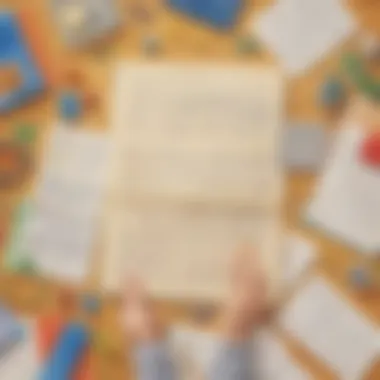

Practical Applications of Math Skills
Understanding practical applications of math skills is vital for second graders. It allows them to connect classroom lessons with real-life situations. When students see how math works outside school, they become more engaged and motivated to learn. Practical applications help to develop essential skills like critical thinking and problem-solving.
When children learn about math concepts through practical examples, they can grasp them better. They begin to realize that math is not just a subject, but a tool for making sense of the world around them. This kind of learning prepares children for more complex concepts in the future.
Math in Daily Life
Every day, children encounter situations where they can apply math. Simple tasks like counting items, organizing toys by size, or measuring ingredients in a recipe can reinforce their math skills. For example, when they help with cooking, they can learn about fractions while measuring cups.
Moreover, going shopping provides a chance to practice addition and subtraction. If a child wants to buy three candies for 50 cents each, they will need to calculate the total cost. This shows how math is relevant in daily decisions. Encouraging kids to participate in these activities makes math enjoyable and meaningful.
Problem-Solving Skills
Developing problem-solving skills is crucial for second graders. Math provides a structured way to approach challenges. When children face a math problem, they learn to analyze it and consider different strategies to solve it. This skill goes beyond math. It applies to various aspects of life, preparing them for future endeavors.
Teaching children to ask questions like "What do I know?" and "What do I need to find out?" encourages their problem-solving process. For instance, if given a word problem about sharing snacks, kids must think about division. This practice teaches them to break down problems into smaller, more manageable steps.
Real-World Scenarios for Learning
Using real-world scenarios in math education offers numerous benefits. Scenarios like planning a birthday party or measuring a garden teach students how math applies at home and in their community.
By setting up fun situations, parents and educators can make math relatable. For example, when planning a party, children can calculate how many balloons they will need based on the number of guests. This type of learning illustrates the relevance of math in everyday discussions.
In summary, applying math skills in practical ways enriches learning experiences for second graders. They start to value math as a necessary part of life. Understanding its use in daily life fosters a successful mindset.
"Mathematics is not about numbers, equations, computations, or algorithms; it is about understanding."
This understanding will stay with children as they progress in their education. By framing math within practical contexts, educators and parents can cultivate a solid foundation for their future learning.
Evaluating Understanding and Progress
Evaluating understanding and progress in mathematics for second graders is crucial. It allows educators and parents to gauge the child's grasp of key concepts and identify areas where they might struggle. This process is essential for adjusting teaching methods and ensuring each student's needs are met. One major benefit of proper evaluation is that it encourages a growth mindset. When children see their progress reflected in assessments, their confidence increases. This is a key component in mathematics, where each concept builds upon previous knowledge. Assessments should not be viewed merely as tests but as tools that provide valuable insight into a child’s learning journey.
Assessments in Second Grade Math
Assessments in second grade math can take various forms. These include formal tests, quizzes, and informal observations. Understanding how second graders learn is important. They often benefit from hands-on activities and assessments that reflect their engagement. An effective way to assess student understanding is through the use of performance tasks. These tasks allow children to apply their knowledge in real-world scenarios. For example, a task may involve measuring ingredients for a recipe, allowing students to see the practical use of math.
Furthermore, it's vital to incorporate diverse assessment types. Combining written assessments with oral discussions can give a fuller picture of a child's understanding. Incorporating peer assessments also encourages collaboration and critical thinking among students. Therefore, assessments must be varied and consistent to build a strong mathematical foundation.
Feedback Mechanisms
Providing feedback is an integral part of evaluating understanding. Timely, constructive feedback helps students recognize their strengths and areas for improvement. Feedback should be specific and focus on the process rather than just the end result. For example, instead of saying, "good job," a teacher might say, "You did well in adding those numbers; however, let's go over how to subtract them next time."
Additionally, feedback can come from multiple sources. Teachers, parents, and even peers can contribute to a child's understanding. Utilizing a variety of channels ensures that feedback is multifaceted and constructive. Parents can offer valuable insights at home, while teachers can provide guidance on curriculum-related progress.
"Effective feedback can motivate students and reinforce learning, helping them to take ownership of their mathematical skills."
To summarize, evaluating understanding through diverse assessments and constructive feedback mechanisms fosters a supportive learning environment. This approach ensures that second graders develop a solid foundation in mathematics. It lays the groundwork for future learning and helps cultivate a positive attitude toward math.
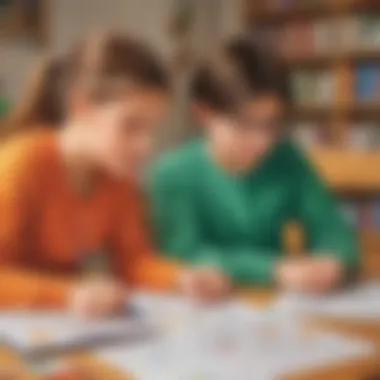
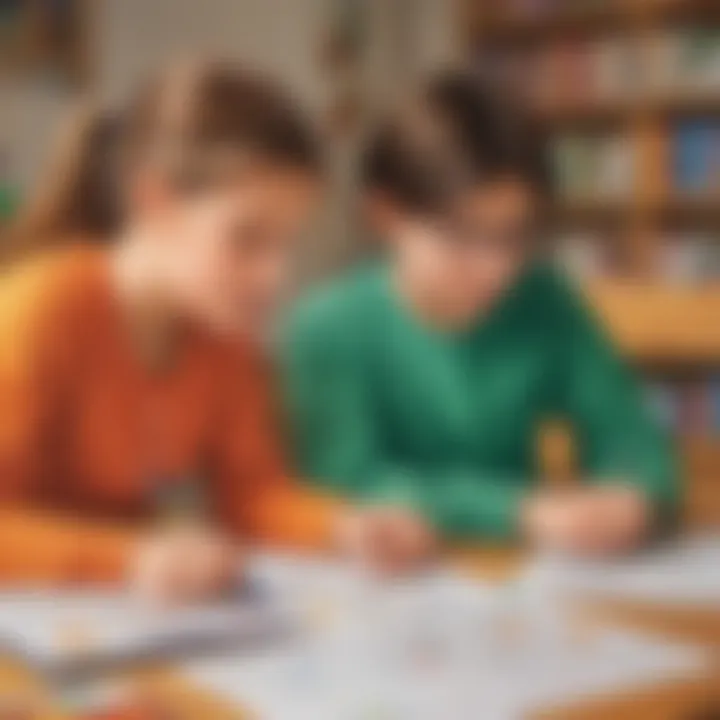
Resources for Educators and Parents
Resources play a crucial role in the educational journey of second graders in mathematics. They are essential for educators and parents alike, as they provide tools that enhance learning and comprehension of vital concepts. Quality resources can foster engaging environments where children can practice math skills in a way that is both enjoyable and educational. These resources also support educators in delivering effective lessons that cater to various learning styles, addressing the unique needs of young learners.
By leveraging appropriate materials, both adults and children can approach mathematics with confidence. These resources can range from traditional books to advanced online platforms. Each type has its own strengths, allowing for a comprehensive approach to teaching math.
Books and Workbooks
Books and workbooks form the backbone of math education for second graders. They provide structured content that aligns with educational standards. Many workbooks are designed to progressively build on math concepts, aiding in retention and understanding.
Benefits of Books and Workbooks:
- Structured Learning: They offer a systematic approach to topics, from basic addition to more complex fractions.
- Practice Problems: Most workbooks include a variety of exercises that reinforce learning through repetition.
- Visual Aids: Many books incorporate colorful illustrations and diagrams, making it easier for children to grasp concepts visually.
When selecting books, consider ones that are engaging and age-appropriate. Titles such as "Math Made Fun for Kids" or "Second Grade Math Challenge Workbook" can be good choices. It's important to periodically review what resources are being used to ensure they continue to meet educational needs.
Online Tools and Apps
In our technology-driven age, online tools and apps have become indispensable for enhancing math education. These digital resources provide interactive learning experiences, making mathematics fun and engaging.
Considerations for Online Resources:
- Interactive Learning: Many online platforms offer games and quizzes that motivate students to practice math without it feeling like a chore.
- Immediate Feedback: Instant feedback helps students identify areas for improvement, allowing them to learn from their mistakes.
- Customizable Learning Paths: Apps like Khan Academy or ABCmouse allow for personalized learning experiences based on the child’s pace and progress.
Inclusion of these tools can drastically improve involvement in math. Parents can track progress easily, which can motivate children to strive for improvement.
Community Resources
Community resources can play a significant role in a child’s educational development. Local libraries, community centers, and schools can provide various materials and programs focused on math education.
Examples of Community Resources:
- Library Programs: Many libraries host math-related events or reading times that feature math-themed books.
- After-School Programs: Community centers often offer after-school math tutoring or clubs that promote group learning.
- Local Workshops: Schools may conduct math workshops for parents and children to attend together, reinforcing learning at home.
By tapping into these community resources, parents and educators can create a supportive network dedicated to enhancing learning outcomes in mathematics.
Quality resources are vital. They not only provide knowledge but also inspire a love for learning in young learners.
Culmination
The conclusion of this article serves as a pivotal moment. It brings to light the significance of the mathematics education landscape for second graders. This phase is crucial not only for understanding numerical concepts but also for establishing a strong foundation for future learning. Teachers and parents alike must recognize their role in fostering a positive environment where young learners can explore mathematics with curiosity and confidence.
Recapitulation of Key Points
In this article, we have examined several essential aspects of second-grade mathematics.
- The importance of early math education, emphasizing its long-term effects on a child’s academic journey.
- Critical mathematical concepts, including number sense, addition, subtraction, and place value.
- Teaching strategies that effectively engage students such as manipulatives, games, and technology integration.
- Practical applications of math skills, which help children see the relevance of what they learn.
- Assessment methods to evaluate understanding, guiding educators in how to provide constructive feedback.
- Resources that both educators and parents can leverage to support learning both in and out of the classroom.
Each of these points highlights the interconnectedness of mathematical concepts and their practical use in everyday life. A firm grasp of these fundamentals will empower children as they advance in their education.
The Path Forward for Math Education
Looking ahead, the future of math education for second graders seems promising. There are several points to consider as we move forward:
- Adapting to Technological Advances: As technology evolves, incorporating new tools and resources will be necessary. Online platforms and apps can enhance engagement, providing new ways for students to connect with math.
- Encouraging Exploration: Creating an environment where inquiry is welcomed can ignite a passion for mathematics. Allowing children to ask questions and explore concepts deeply will foster greater understanding.
- Professional Development for Educators: Ongoing training can equip teachers with the latest methods and practices. This will enable them to better support diverse learning styles in the classroom.
- Building a Supportive Community: Collaboration among parents, educators, and community resources is essential for comprehensive development. Sharing strategies and successes can strengthen the support system for students.
- Focus on Problem-Solving: Emphasizing practical problem-solving skills across the curriculum will help children apply math in real-life scenarios, making their learning more relevant and meaningful.
Through thoughtful collaboration and a focus on understanding, we can create a rich mathematical foundation for second graders as they embark on their educational journeys.







